
 |
Eager Space | Videos by Alpha | Videos by Date | All Video Text | Support | Community | About |
|---|


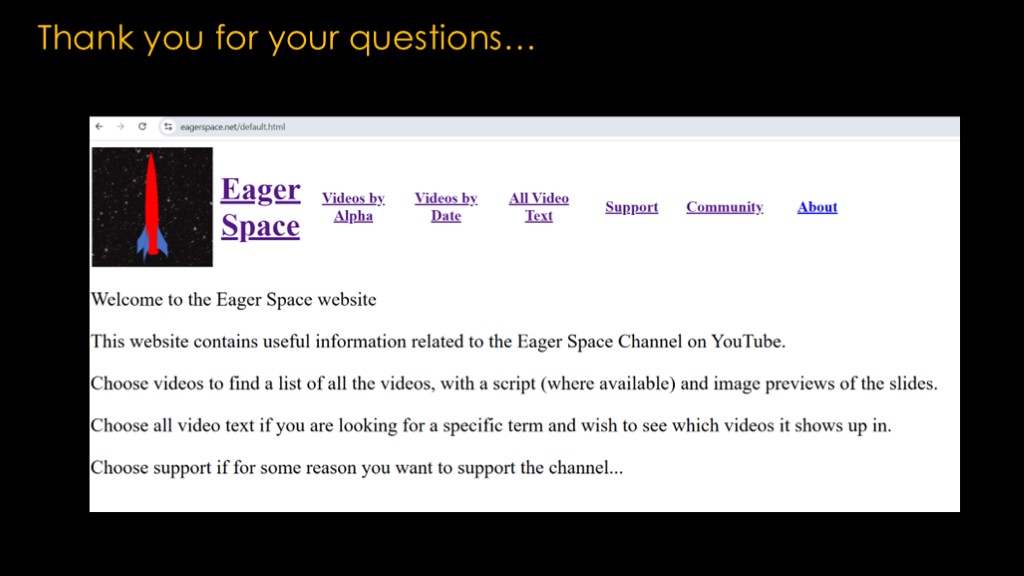
Thanks to everybody who asked questions.
Many of the answers are in videos that I've done in the past. You can find past videos by going to eagerspace.net and searching around.

It's all about the constellations right now...
SpaceX is obviously flying Falcon 9 to death for starlink, Amazon is hoping to fly a ton for Kuiper, and there are others interested, including the US department of defense.
Starlink is making enough money now that it's self-supporting and will probably keep expanding, but it's still possible that Kuiper and others could fail.

I really don't want to be derivative and therefore I watch very little Space related youtube. I will watch everyday astronaut when it's a topic I'm never going to cover. I generally avoid scott manley because we have similar topics.
You should, however, watch/listen to Main Engine Cutoff and Off Nominal. Both are great.

Lots of design options here. The payload area of starship isn't highly stressed as the only force it carries is from the payload section structure and the header tank.

This would probably require a full video to explore...
The challenge is that there is *nothing* in space when it comes to infrastructure; it's like the western world before the industrial revolution. You need to solve the same basic problems from that time - how to obtain materials, how to process the materials into something useful, how to power those processes, etc., etc.
So far we don't have any commercial product that it makes sense to create in space. NASA has spent 20 years looking for the killer app, but so far it doesn't exist.
Maybe if launch becomes a lot cheaper, maybe then there's a useful application.
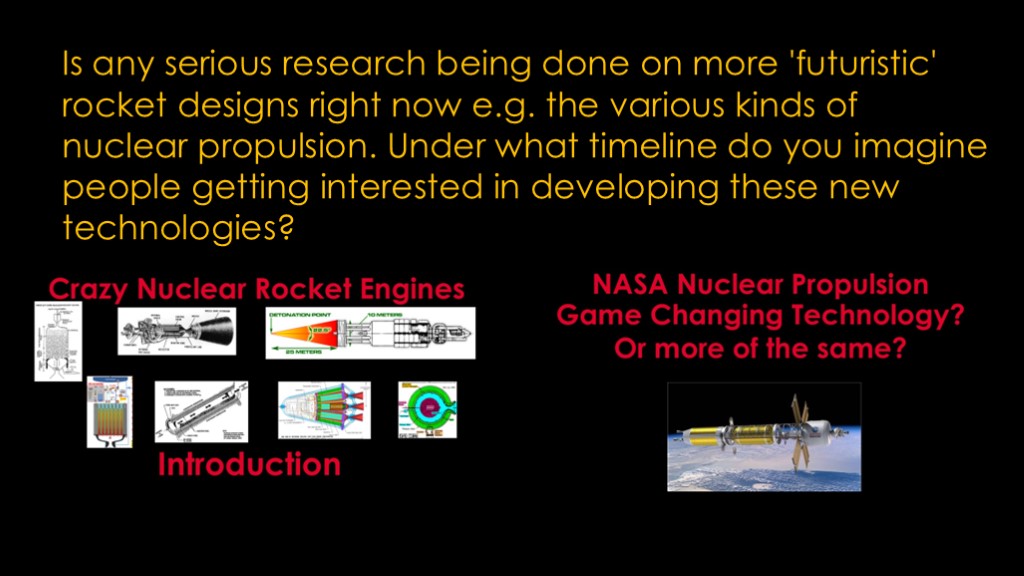
There are lots of ideas that I covered in my crazy nuclear rocket engines series. The only one that seems practical is nuclear thermal propulsion, which NASA and the DoD have a project on right now. I don't expect much from it.
My generic comment is that you can't find anybody who is willing to spend their own money trying to develop these technologies.
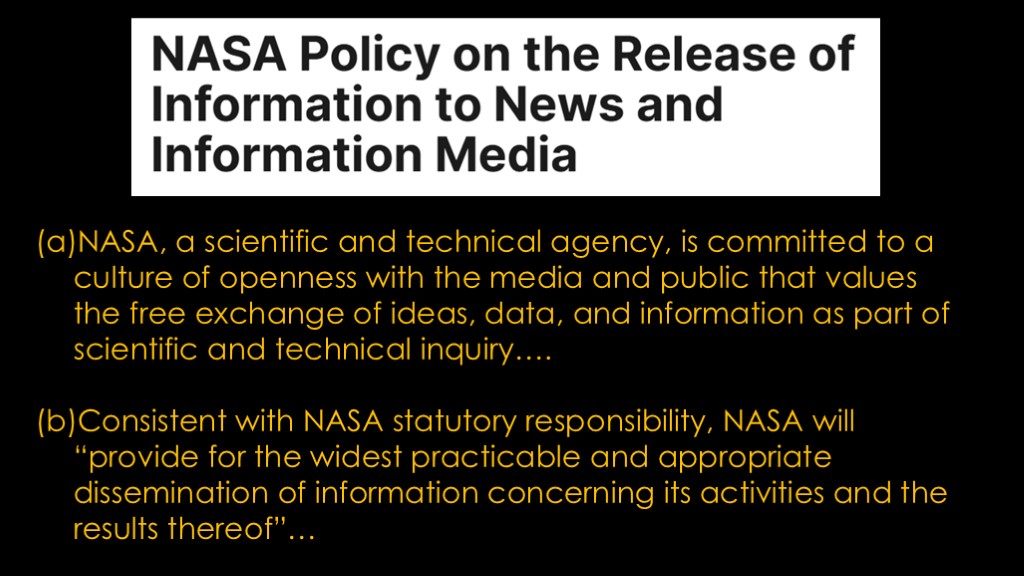
NASA's policy about the release of information starts with two requirements.
NASA is not adhering to either of them. Let's take one example.

I own KSP but I've only played it a few times. Not really my kind of game, apparently.
Anything that gets people doing spacey things is good.
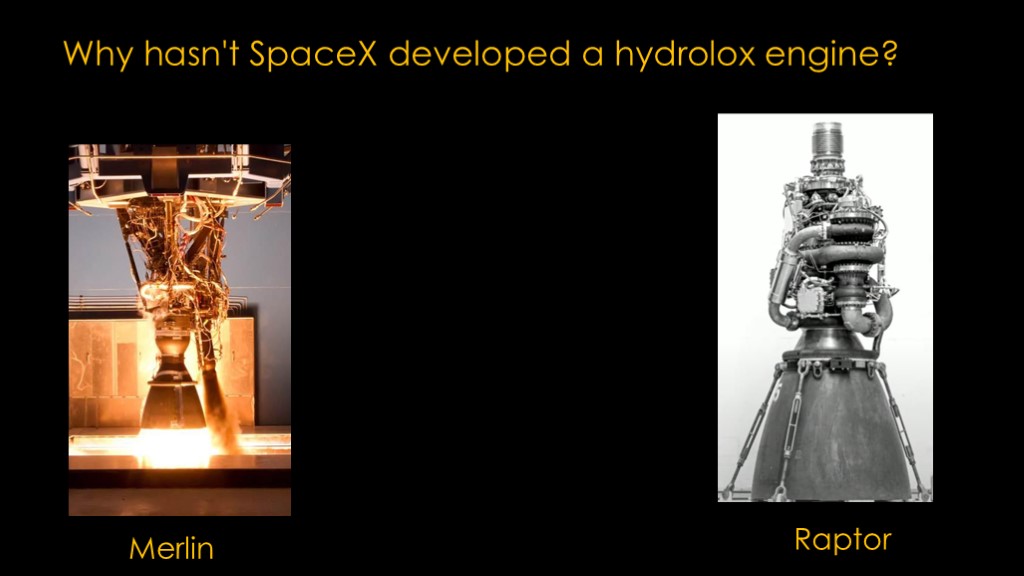
Merlin was kerolox because there are lots of RP-1 engines out there, which means lots of prior art and quick and cheap way to get an engine that was good enough.
Raptor started as a hydrolox engine but during development SpaceX decided that methalox made more sense.
That means that they looked at all the tradeoffs and decided that hydrolox was the inferior choice for starship.
The biggest problem with hydrolox for a rocket like Starship is that it would have to be a much bigger rocket. Plus, hydrogen is famously hard to work with and hard to build a high-thrust engine out of.
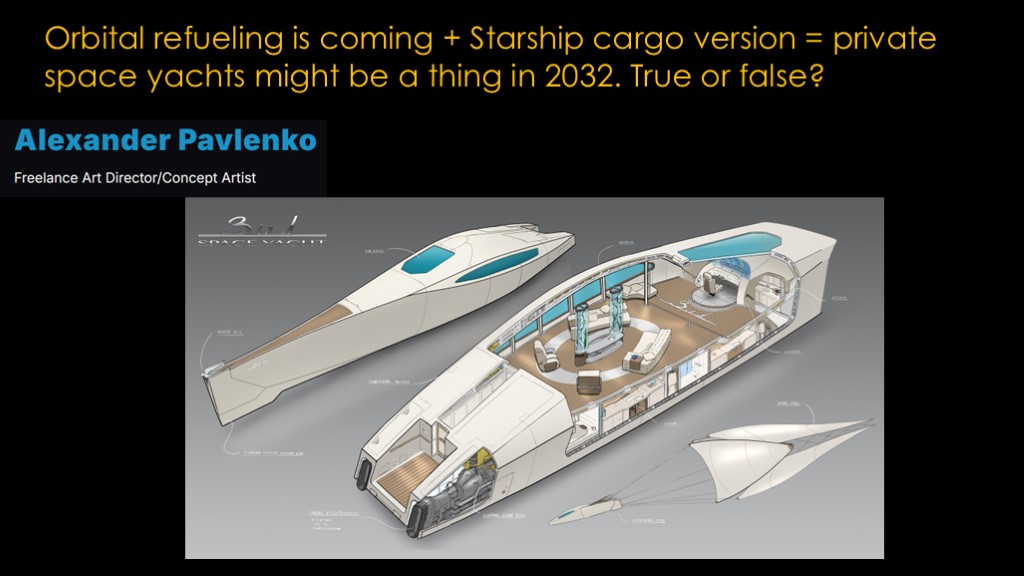
False. Let me count the ways...
Refueling seagoing yachts is pretty simple because all seagoing boats are at the same level and it doesn't cost a lot to get fuel from land to wherever the boats.
It is very energy intensive to get from one orbit to another in space. You don't just pull into a port someplace or request somebody come out and refuel your yacht.
The second issue is one of market. It's not clear who would buy such a thing, and therefore it's hard to create a business plan where a company can make money doing this.
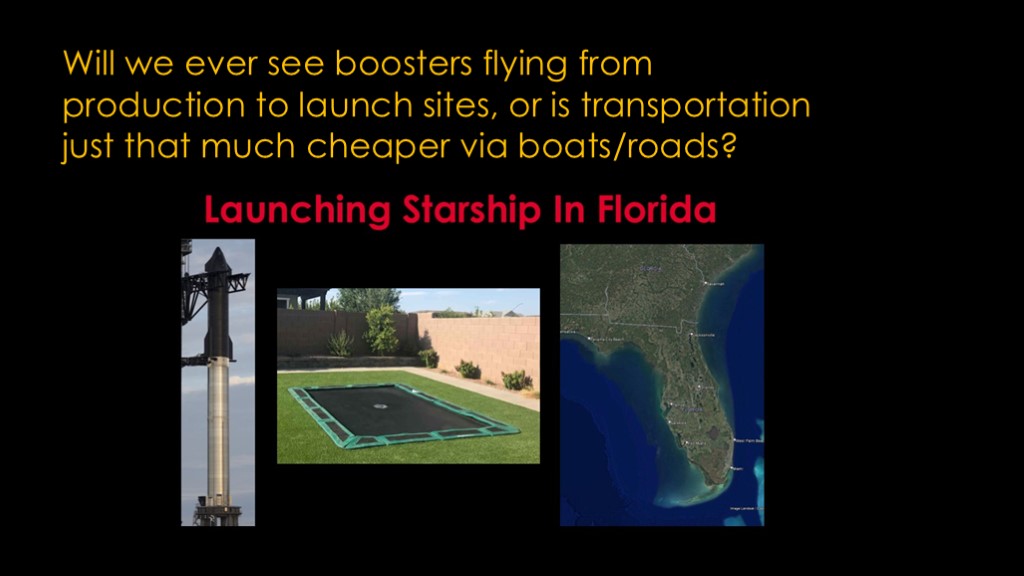
Probably. I talk about it here.
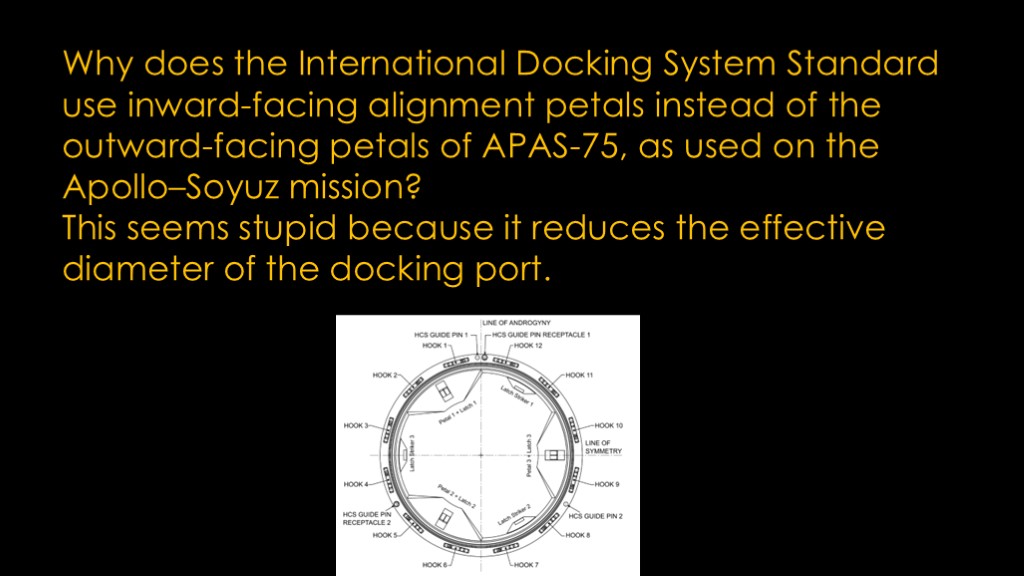
I'm not an expert on this, but my understanding is that they wanted a standard that would work with smaller vehicles.
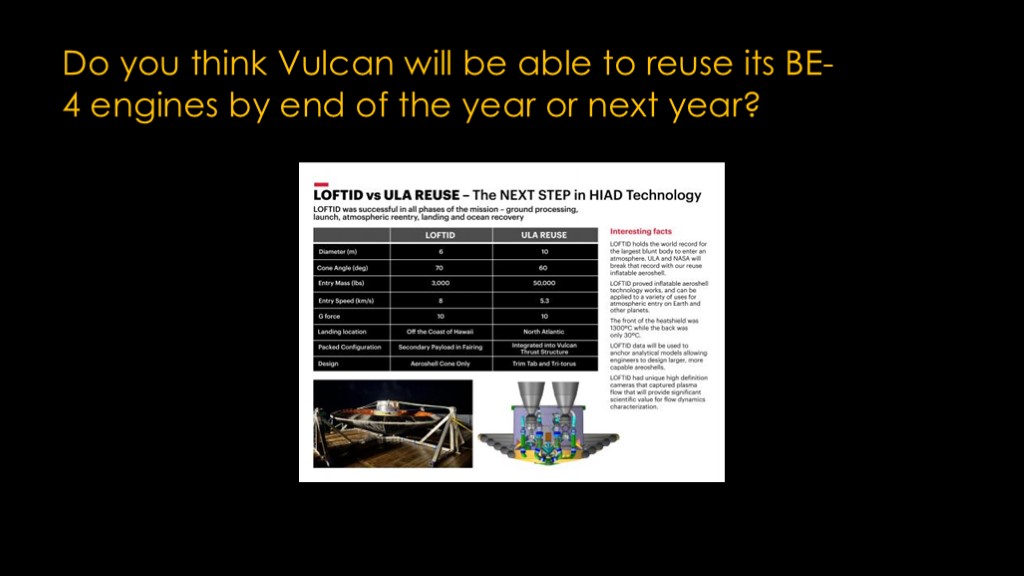
No way in 2025. Unlikely in 2026. They need to focus on flying the NSSL backlog right now.
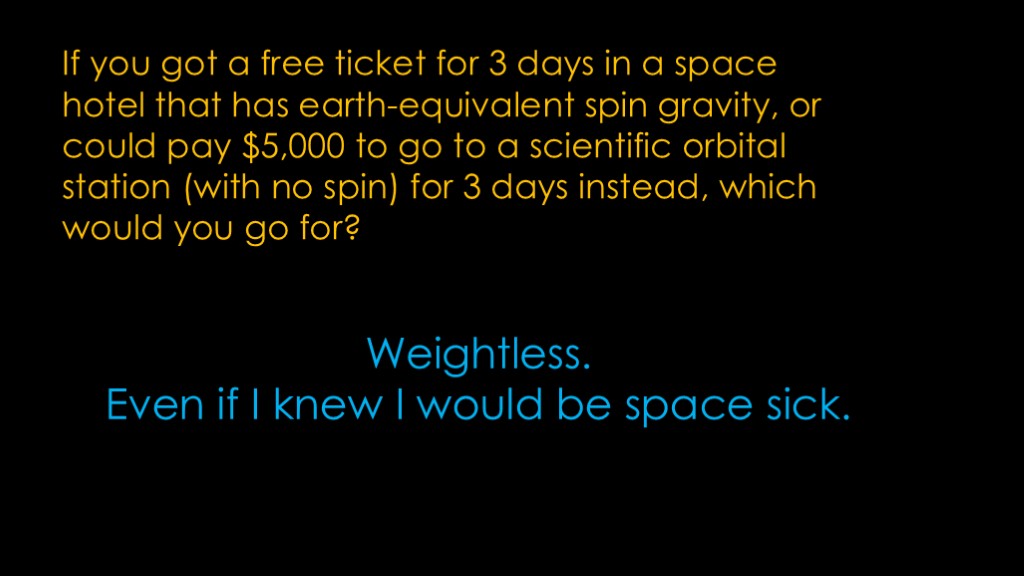
Weightless. Even if I knew I would be space sick.
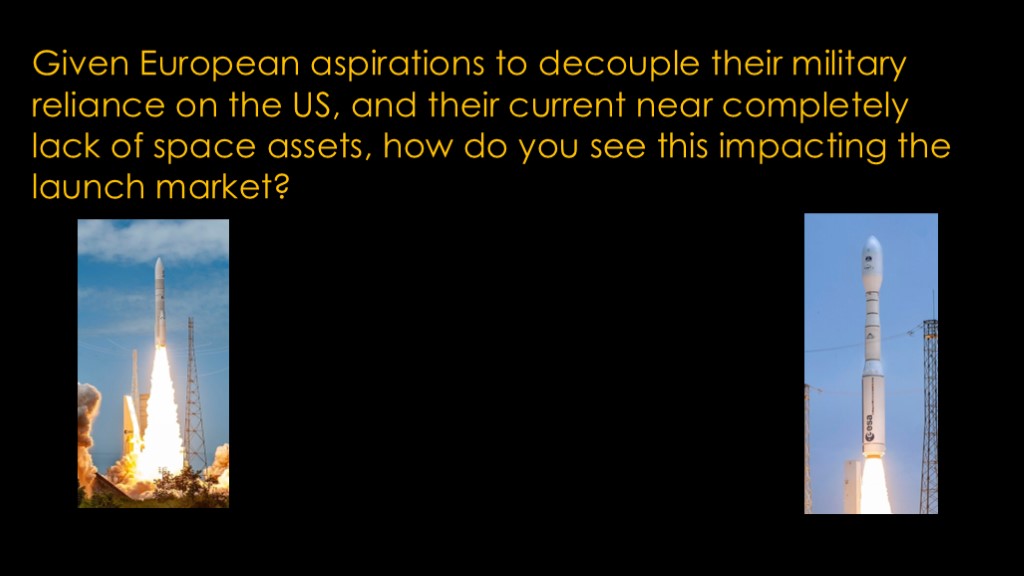
Not sure what you mean by near completely lack of space assets...
Both Ariane 6 and Vega C are flying, and ISAR and Rocket factory Augsburg are likely flying this year.
Europe is in the midst of finishing their Galileo navigation constellation and will then be launching second generation satellites next year.
If they want to decouple in terms of satellites and military capability, it's going to take a few years to get their own satellites made but they can certainly launch them.

Pratt & Whitney had a license to built the RD-180 in the US, and reportedly ULA talked to them and the price that Pratt & Whitney wanted to set up manufacturing had the word "billion" in it. ULA wasn't an engine company and they'd have to convince somebody to do any reverse engineering for them.
A second issue is that ULA really wanted to go from two rockets to one rocket. The RD-180 was about 3800 kilonewtons of thrust, and the two BE-4 that they settled on for Vulcan are about 4800 kilonewtons of thrust. That would argue that the RD-180 wasn't quite big enough - the current Vulcan design can *barely* meet the NSSL requirements.
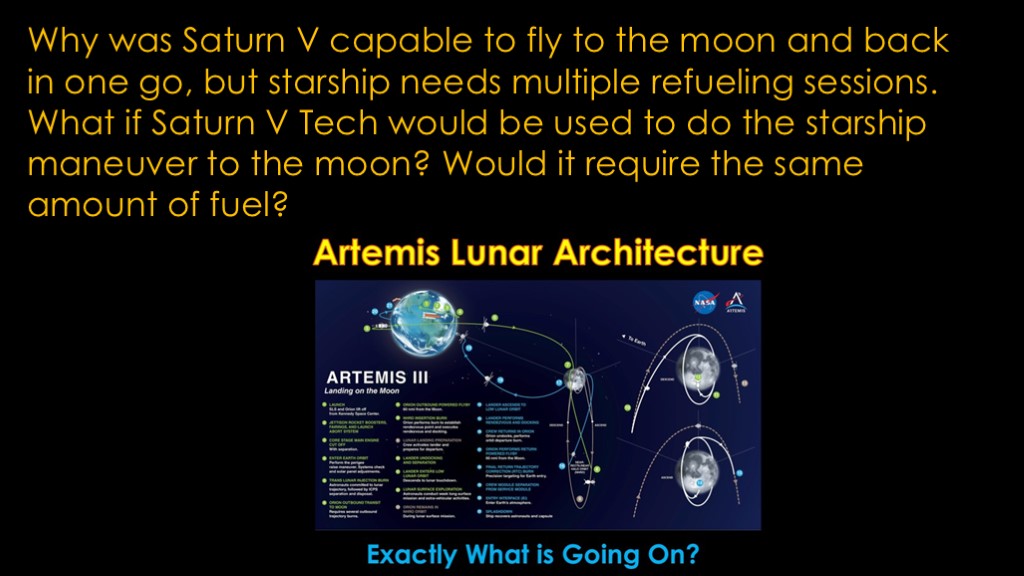
The Apollo spacecraft and lander were highly optimized to be as light as possible and do one specific job.
SLS and Orion weren't designed for a moon mission, and block 1 can't carry a lander, not that congress appropriated money to build one. So SLS / Orion can only put Orion into a weird near rectilinear halo orbit because Orion was designed for the constellation architecture, not the artemis architecture. It's also a bit of a pig when it comes to mass.
HLS Starship and Blue Moon get a really difficult job - get a lander all the way to the moon, to the lunar surface, and then back to NRHO. It's a harder job than what the Saturn V did.
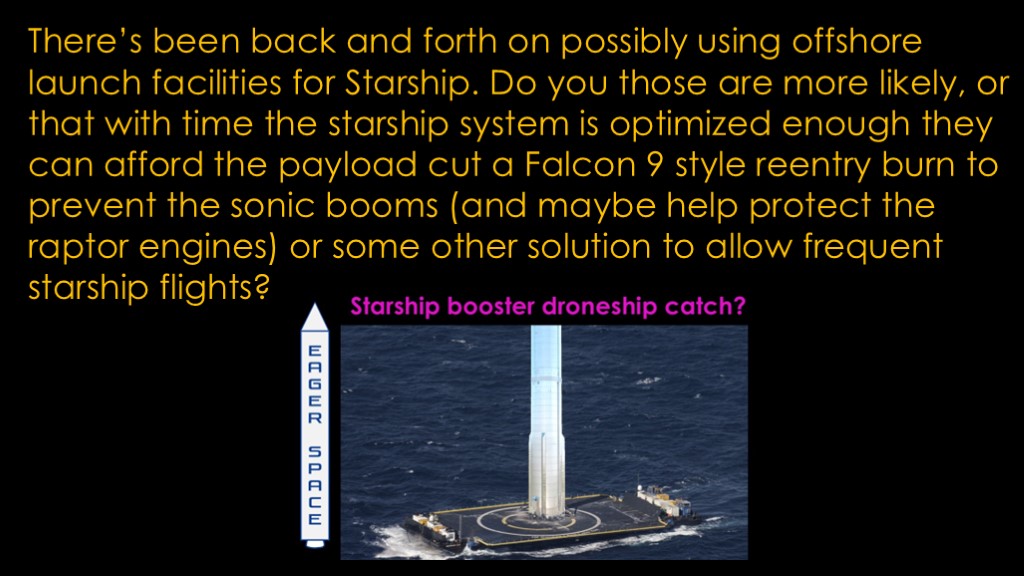
I wrote about starship booster catches on drone ships. I don't think they are likely.
I can see offshore being useful, but getting propellants and payloads there is a significant logistical issue.
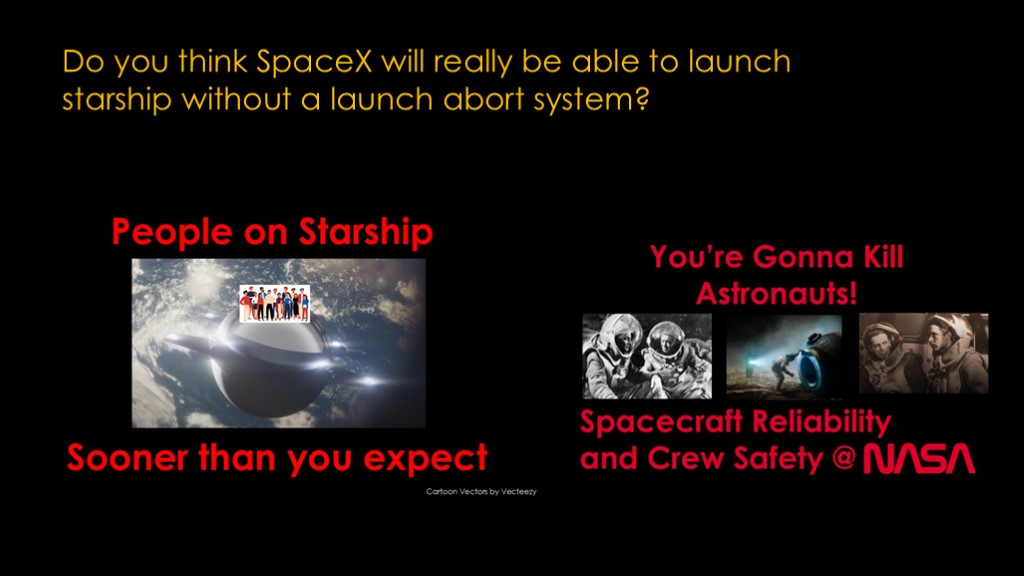
Go watch this.
And then go watch this...
NASA happily flew astronauts on shuttle for years despite having no good idea how risky it was.
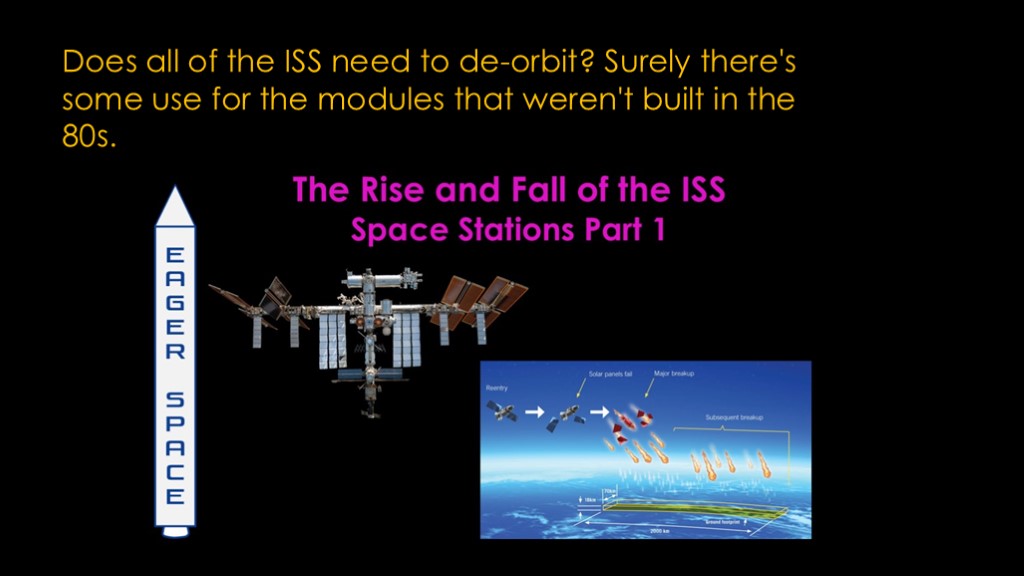
NASA did a great white paper on this, and I talk about it in this video.
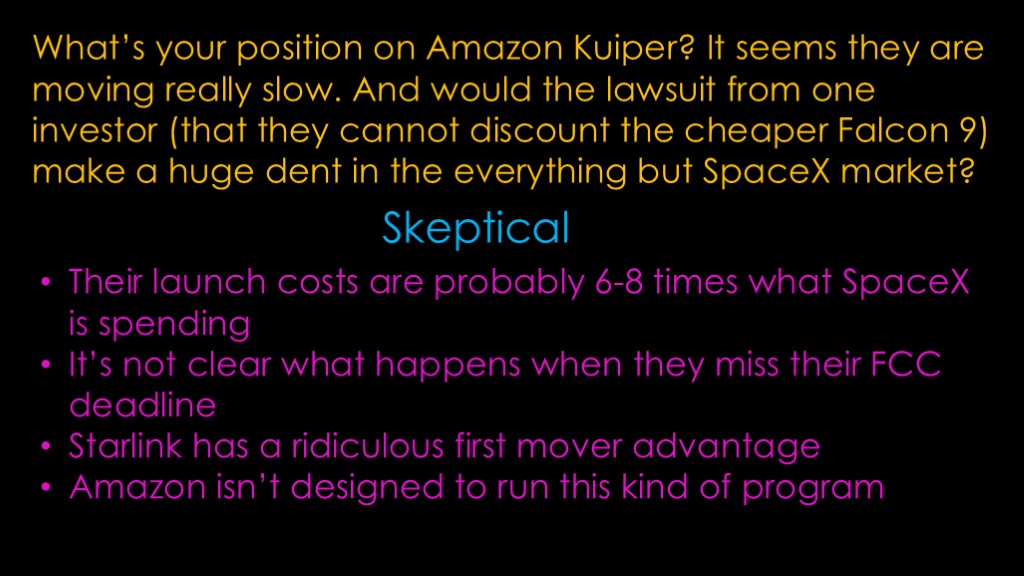
Skeptical.
You may have noticed that I haven't done a video on Kuiper. I generally don't invest the time until there's actually real hardware out there or it's something new and unique.
But here are a few thoughts...
I don't think that paints a good picture.
I could maybe see Apple doing something, however.
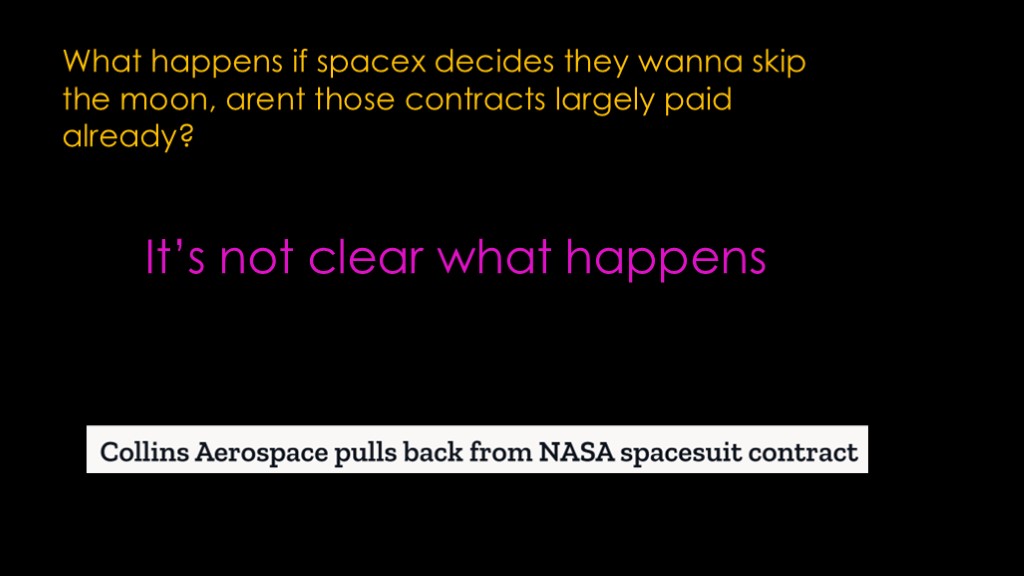
It's not clear what happens from my reading of the contract.
I do think this is something that NASA didn't really think deeply about in their rush towards fixed price contracts, especially ones like this with huge development costs. NASA may need starship more at this point than Starship needs NASA, though SpaceX clearly would like NASA cooperation to do Mars.
We saw something similar in 2023 when Collins Aerospace said, "thanks, but no thanks" and dropped out of their development contract for ISS spacesuits.
And yes, most of the first contract money for HLS starship has already been paid to SpaceX, though there is the Artemis IV contract that SpaceX would presumably like to collect on.
This is very different from the commercial crew contracts where all of the real money was in operational flights.
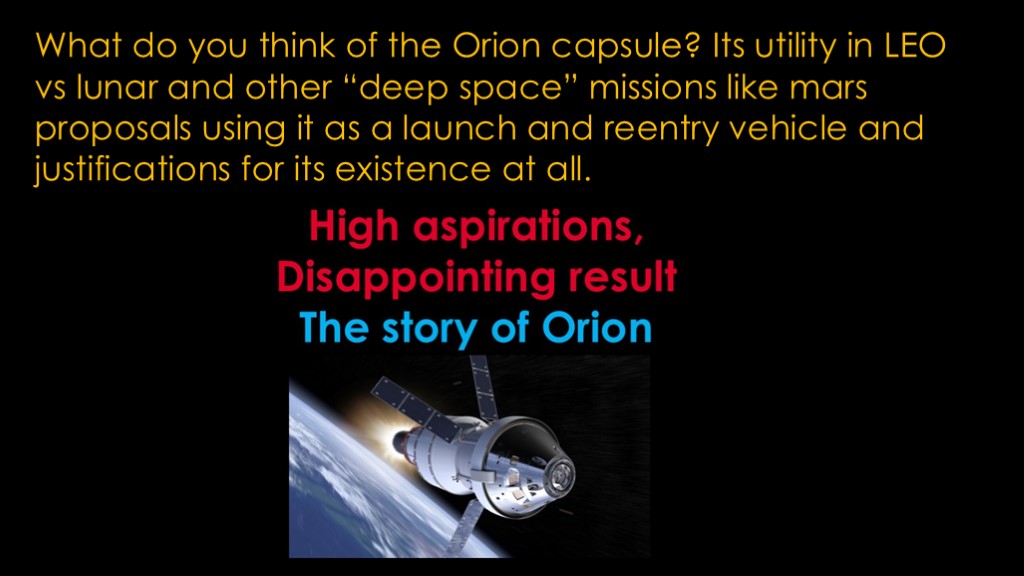
Go watch this...

Pretty obviously, a 1971 Citroen SM in Euro trim with steerable headlights and a 3 liter engine from Maserati.
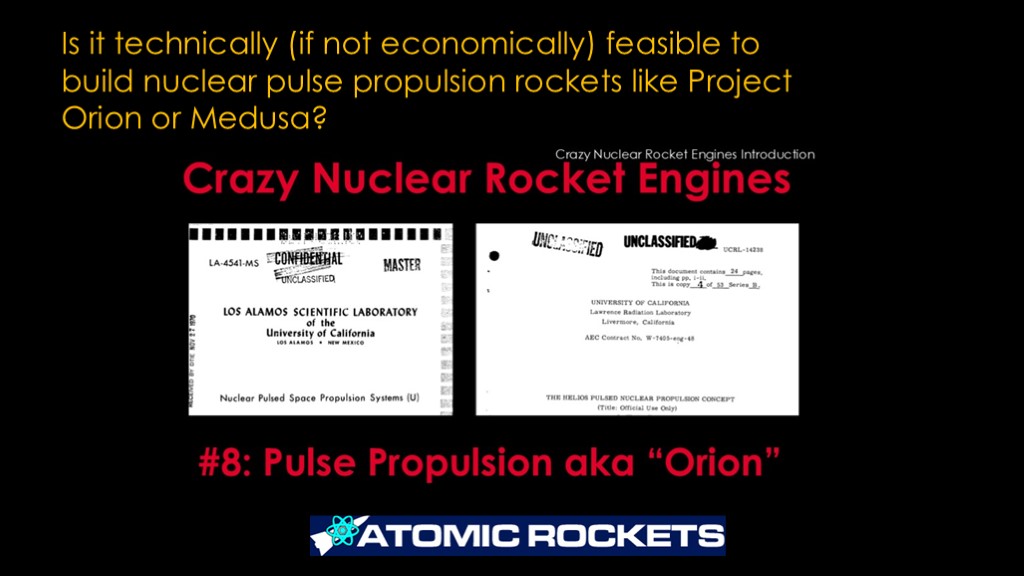
Technically feasible? Sure.
Practical in any other way? Not at all.
The Atomic rockets website has a lot of info on Orion.
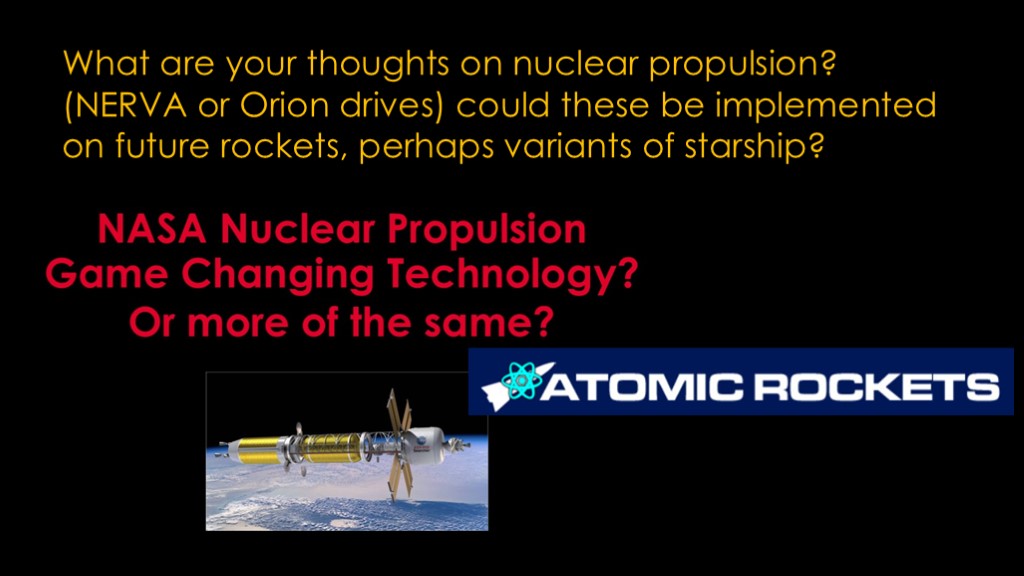
You should probably watch my video on the NASA nuclear propulsion program.
It's been 50 years since the NERVA tests in the 1970s, and during that time none of the nuclear propulsion advocates have been willing to spend their own money developing the technology. That's generally a sign that there's not a lot of "there there".
Technically, nuclear thermal drives have high specific impulses but they are *heavy*, need heavy shields, may not have great reliability, and are radioactive as hell once you turn them on. I don't think they're worth it.
Orion drives are decent when you are in the atmosphere but there's no way you can ever operate that. They have less advantage in vacuum. I have a video on orion as well.
The atomic rockets website has a ton of useful information about nuclear propulsion.
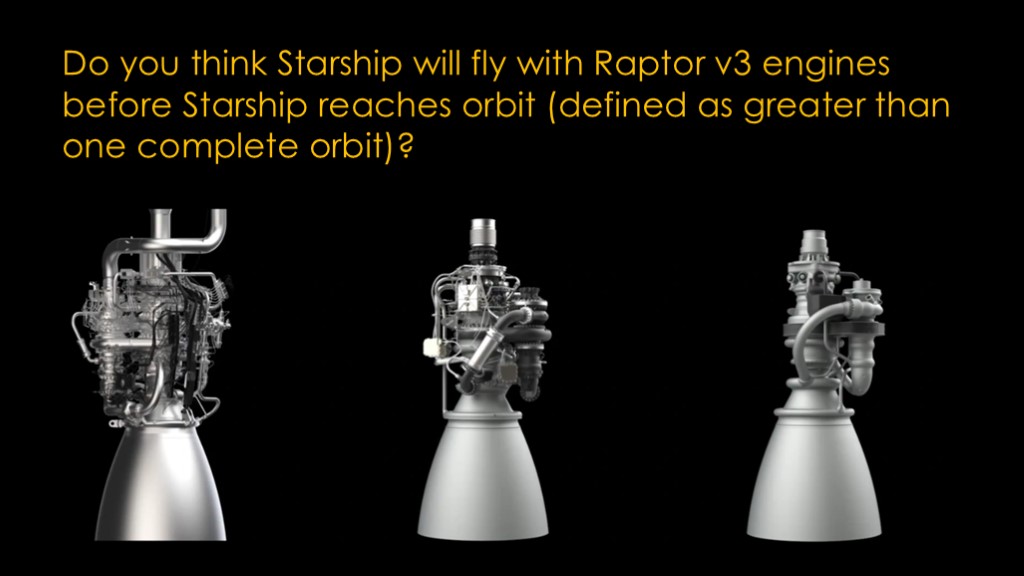
My guess is it will probably get there before raptor v3 flies, but it's not at all clear when starship 3 shows up so it could easily go the other way.

Right now, the current size is pretty close to zero. There are some commercial lifetime extension programs for geosynchronous satellites.
I don't see a lot of architectures where orbital refueling makes much sense. The problem is that you need to chose a useful location for your propellant depot and that location depends on where you are launching from and what your target goal is.

I have a guns to space video that has some information about HARP.
I don't think it's likely I'll do another one. Unless you want to send me to Barbados. My guess is that it would probably take a month to do enough research for a video.
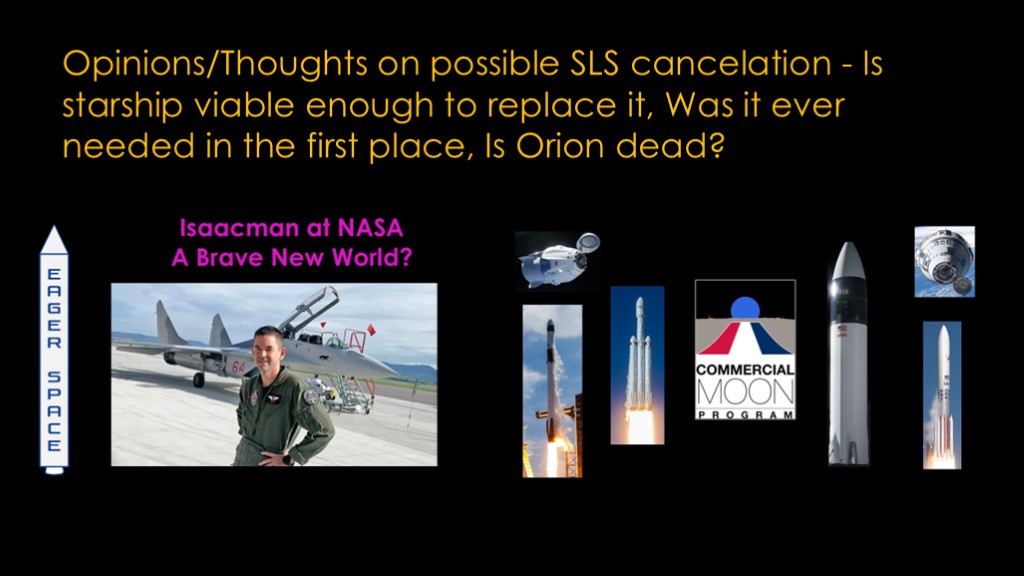
I talk about this in two previous videos; the old commercial moon program and the recent one about how NASA may evolve with Isaacman as Administrator.
My general comment is that Artemis works only if Starship or blue moon work as landers. Both of those landers are more capable when it comes to delta-v than SLS and Orion, so you can certainly figure out how to do moon missions without SLS and Orion.
SLS was a reaction to Constellation not being a viable program, and congress just told NASA to build a big-ass rocket out of shuttle parts and to keep working on Orion. There was no associated mission until later. SLS/Orion did a good job of what congress wanted but it's so expensive that you can't afford to fly it enough to build a real exploration program out of it.

If you enjoyed this video, listen to this...